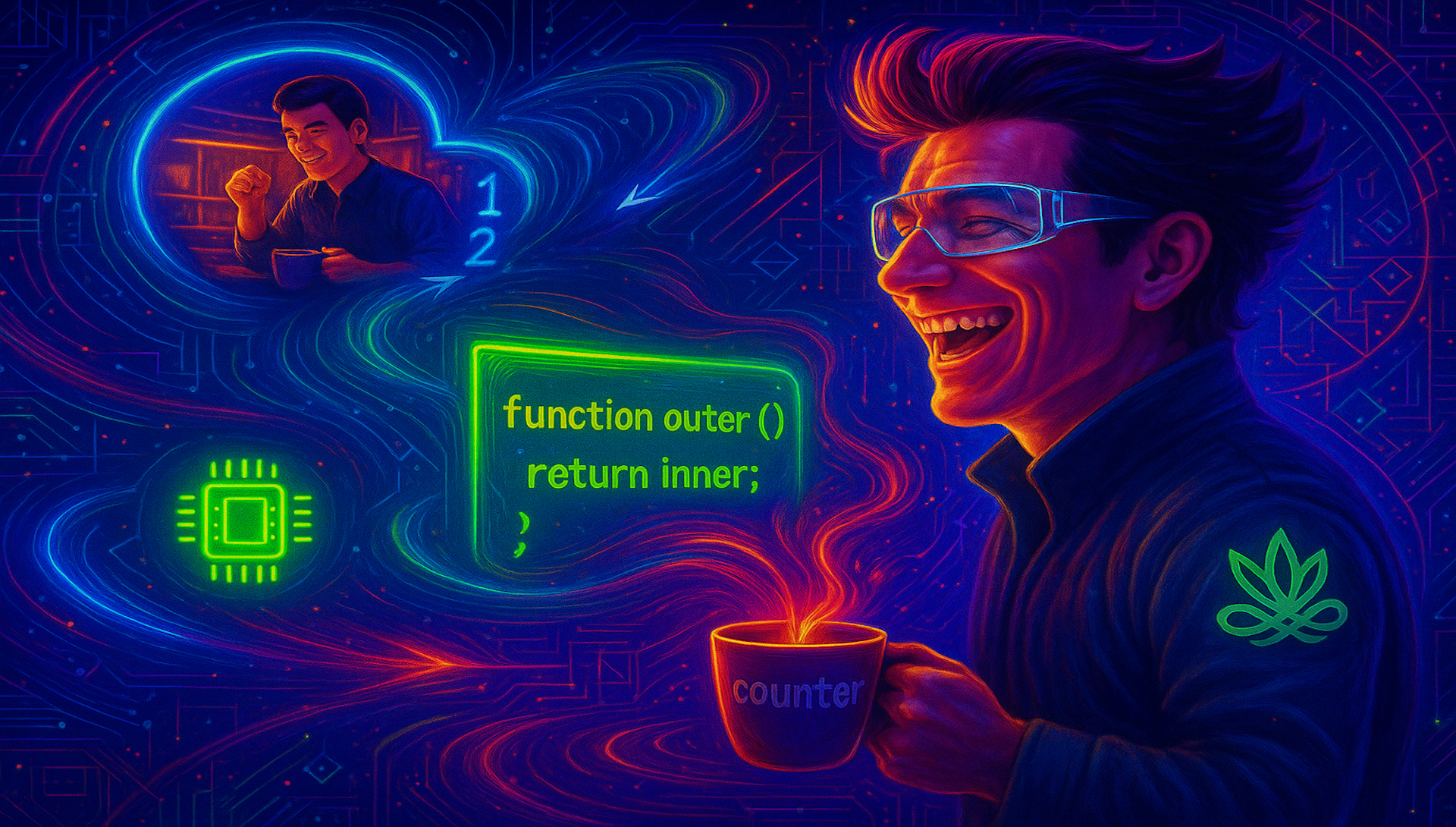The Easiest Way to Understand Closures (Hint: It's Not That Scary!)
5/30/2025

Closures can sound like JavaScript black magic, but they're just functions that remember things—like that waiter who always remembers your last coffee order, no matter how long ago you visited. That's a closure. ☕
Imagine this: you have a function inside another function, and even though the outer function finishes executing, the inner function still remembers and has access to the outer function's variables. Pretty cool, right?
Here's the deal:
js
function outer() {
let counter = 0;
return function inner() {
counter++;
console.log(counter);
};
}
const count = outer();
count(); // 1
count(); // 2What's Going On?
The 'inner' function keeps access to 'counter', even after 'outer()' finished running. That's the power of a closure: a function bundled with its lexical environment, meaning the function “remembers” the scope in which it was created.
Why Should You Care?
Because closures are everywhere in JavaScript. They power callbacks, state management, event handlers, and basically everything that makes your code dynamic and efficient. ⚡
Still Fuzzy?
Totally normal! Closures are tricky at first, and understanding them doesn't come from reading about them once or twice, or by memorizing—they click through consistent practice. The more you code and apply closures, the clearer they'll become.
✨ Kadmía makes it easy to solidify tricky concepts like this with quick, interactive challenges that stick in your brain. You're not just reviewing syntax—you're learning to think like a dev.
Ready to turn “wait, what?” moments into “ah-ha!” wins? Click, code, and conquer. Your closure journey starts now with us! 🚀


